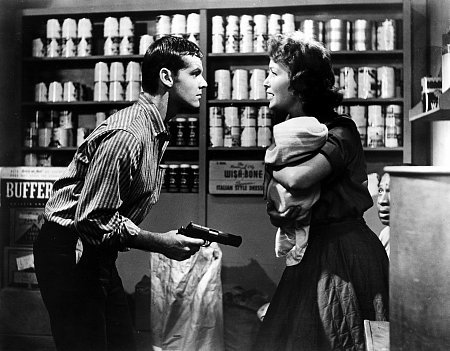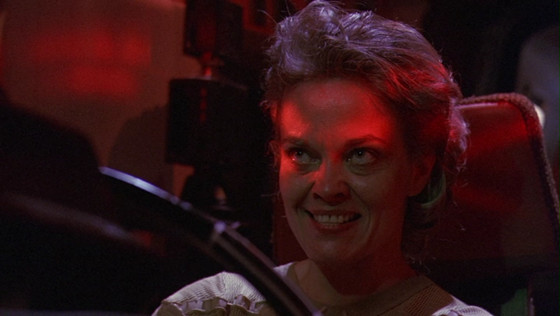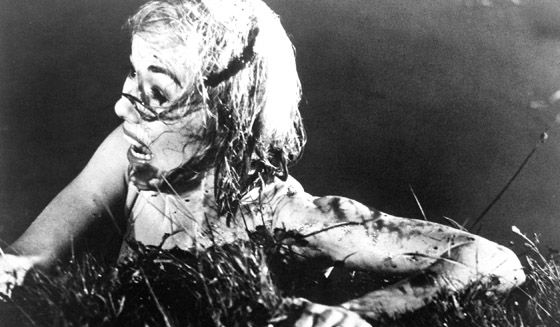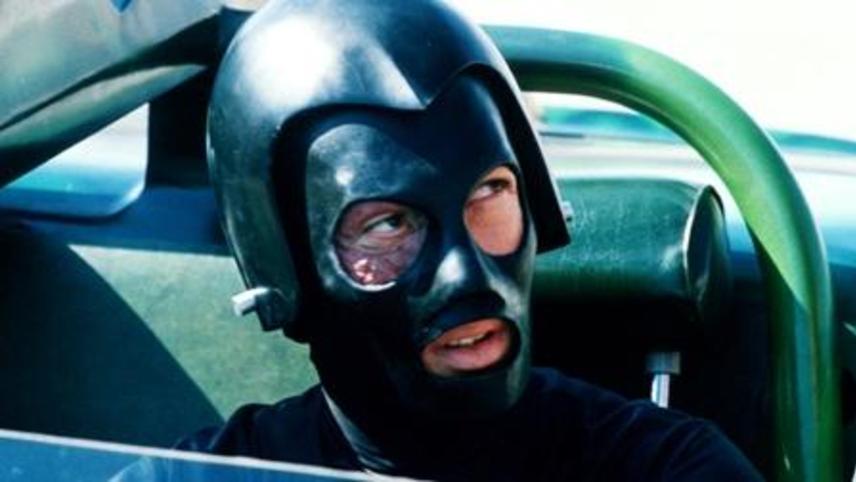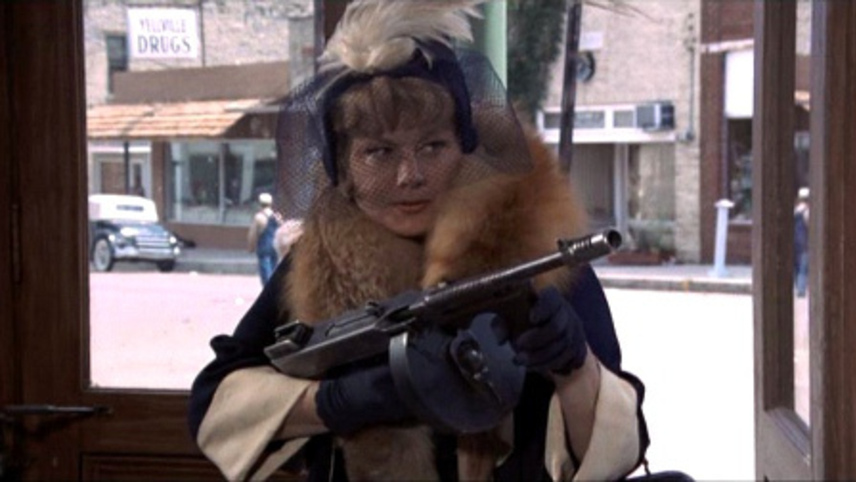If it wasn’t for Roger Corman, the Pope of pop cinema, the undisputed king of the B-movie, and one of the most prolific producers of all time, we may have never seen the work of many of the greatest filmmakers/actors ever. Who? You ask. Martin Scorsese, Francis Ford Coppola, Ron Howard, James Cameron, Joe Dante, Jonathan Demme, Peter Bogdanovich, Curtis Hanson, Jack Nicholson, Robert De Niro, Dennis Hopper, Peter Fonda, and Bruce Dern…just to name a few.
As a distributor he brought the works of Ingmar Bergman, Francois Truffaut, Federico Fellini, and Akira Kurosawa to the States for the first time, exposing young American filmmakers at the time to a type of world cinema that would go on to change Hollywood forever.
In spite of these important contributions to cinema, he’ll probably most be remembered for creating some of the most schlocky “exploitation” films ever made. His philosophy to making films was to minimize risk mostly by focusing on making genre films with built in audiences, prioritizing quantity over quality, and trying to squeeze every last dime out of the budget to maximize profit (sound familiar, Hollywood?).
Sometimes that meant taking leftover money from a film and using it to make another entirely different film and to do it quickly for he saw himself as a sprinter not as a long distance runner. He would also reuse sets and actors over a series of films to save costs which sometimes meant he’d hire someone to write a script on the spot.
Corman received his degree in industrial engineering from Stanford, and after he graduated he got a job with U.S. Electrical Motors. He worked just four days and quit, telling his boss that he had “made a terrible mistake”. He eventually pursued a career in film and after a brief stint at Fox in the mail room and as a story reader, he decided he wanted to step out on his own.
He ended up at the newly founded American International Pictures (AIP), which was dedicated to making independent low-budget films aimed at teenagers. He was their primary producer and produced 19 films in just his first three years with them. He also made a huge impact as a director, especially with the film series that became known as the Corman-Poe Cycle (eight films all based on Edgar Allen Poe stories).
The culture Corman created at AIP as well as his own companies New World Pictures, Concorde Pictures, and New Horizons along with his uncanny ability to turn a profit on every film he produced allowed him to discover and nurture new talent. He was able to takes risks and give people like Coppola, Scorsese, and Nicholson a shot. This culture of opportunity seems to be fading in Hollywood and probably will continue to do so until the next Roger Corman comes along.
The New York Times in their review of Corman’s book, How I Made a Hundred Movies in Hollywood and Never Lost a Dime, best summed up the importance of Corman’s legacy with this quote, “Corman, as both director and a producer, taught not only craft and technique but also clarity of thought and, above all, economy of means. Working on incredibly tight budgets, he never had the time to become self-conscious or pretentious.”
The nature in which Corman made films lead to some legendary stories regarding his productions. This list includes some of those stories.
20. The Cry Baby Killer (Producer, 1958)
Genre: Crime
Film Plot: 17 year old Jimmy Wallace (Jack Nicholson) thinks he may have killed one of the two thugs who were pursuing him. He hides out in a local drive-in where he takes three hostages, barricading himself and them in a storeroom. Meanwhile, the media has learned of the situation and soon a TV news crew arrives followed by a crowd of spectators. Soon concessions are being sold, and the event becomes a circus.
Production Notes: The film failed financially (initially) and Corman blamed it on the fact that he was out of the country for most of pre-production.
Why It’s Essential: It’s Jack Nicholson’s film debut and is quite prescient in the ways it touches on media sensationalism.
19. Galaxy of Terror (Producer, 1981)
Genre: Horror, Gorefest
Film Plot: As a lone rescue ship proceeds on its long voyage across space, the crew are surprised to encounter a strange pyramid shaped structure. Their surprise soon turns to horror as, one by one, they discover that their darkest nightmares are all starting to become real.
Production Notes: Corman promised financial backers that there would be a sex scene featuring actress Taaffe O’Connell. In the script there was a scene where a maggot killed her character, so he chose to rewrite the scene as a sex scene and in turn created one of the most disturbing (sex) scenes ever. James Cameron was also the production designer and second unit director on it and you can see some hints, in the design of film, of what we would eventually see in Aliens.
Why It’s Essential: The (in)famous sex scene with the 12 foot long worm like creature known as the “id monster” and for Cameron’s early design and effects work.
18. Dementia 13 (Producer, 1963)
Genre: Horror
Film Plot: A scheming young woman (Luana Anders) attempts to have herself written into her wealthy mother-in-law’s will by visiting her late husband’s family castle in Ireland. Her plans become permanently interrupted by an axe-wielding lunatic who stalks and murderously hacks members of the family.
Production Notes: After finishing the shoot for The Young Racers, Corman had $22,000 and told the sound man on the shoot, Francis Ford Coppola, to take some of the remaining crew and make a low budget horror film. Coppola wrote a brief draft of story idea in one night and described to Corman the most vividly detailed sequence: a half naked woman ties several dolls to the bottom of a lake, then surfaces to find herself at the feet of an axe murderer.
Corman loved it and immediately provided Coppola with the funds to make it. Once Corman finally saw it, he hated it. Playing off the strategy Hitchcock used to entice audiences with Psycho, Corman hired Monte Hellman to shoot a prologue to the film that featured a psychiatrist addressing the audience to make sure that they were mentally fit to see the picture. He also had theaters hand out questionnaires that included yes or no questions like “The most effective way of settling a dispute is with one quick stroke of an axe to your adversary’s head?”
Why It’s Essential: It’s Francis Ford Coppola’s “legitimate” directorial debut.
17. Death Race 2000 (Producer, 1975)
Genre: Action, Sci-Fi
Film Plot: In an alternate future, the United States has become a totalitarian regime overseen by the charming but sinister Mr. President (Sandy McCallum), who, in order to satisfy the masses’ need for entertainment and to quench their thirst for violence, creates a new national sport — the Death Race — a nationwide road rally in which the winner is not determined by who finishes first, but by who scores the most points along the way by running over hapless pedestrians. After winning the race, Frankenstein (David Carradine), the most popular driver, turns against the president and starts a revolt.
Production Notes: Corman wanted to make a futuristic sports movie in hopes of cashing in on the advance publicity of “Rollerball” thus furthering his reputation as the master of the “mockbuster”. Corman also stunt drove in scenes that were shot on public streets, since the custom built cars were not street legal, the film’s legitimate stunt drivers didn’t want to risk being arrested.
Why It’s Essential: There are some genuine thrills and it features a pre-Rocky Stallone.
16. Bloody Mama (Director, 1970)
Genre: Mobster, Action
Film Plot: Machine gun totin’ Ma Barker (Shelley Winters) goes on a Depression-era rampage of bank robbery, murder, and kidnapping with her four sons. Incest, a heroin overdose, and shooting an alligator with a tommy gun happen along the way.
Production Notes: Corman said it was one of the smoothest shoots he ever did. A young Robert De Niro, who played the junkie son, lost 30 pounds to play the role and would sleep in a shallow grave during lunch to stay in character.
Why It’s Essential: The finale is pretty epic plus it features a young Robert De Niro.
